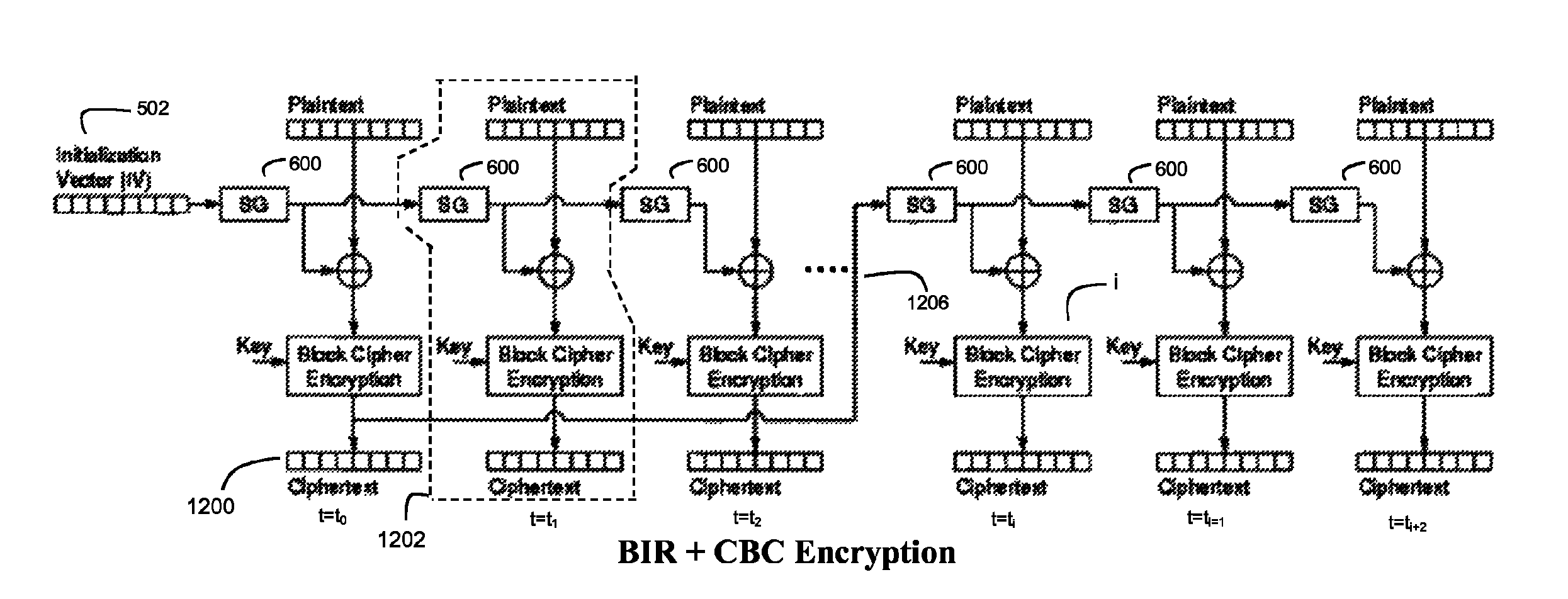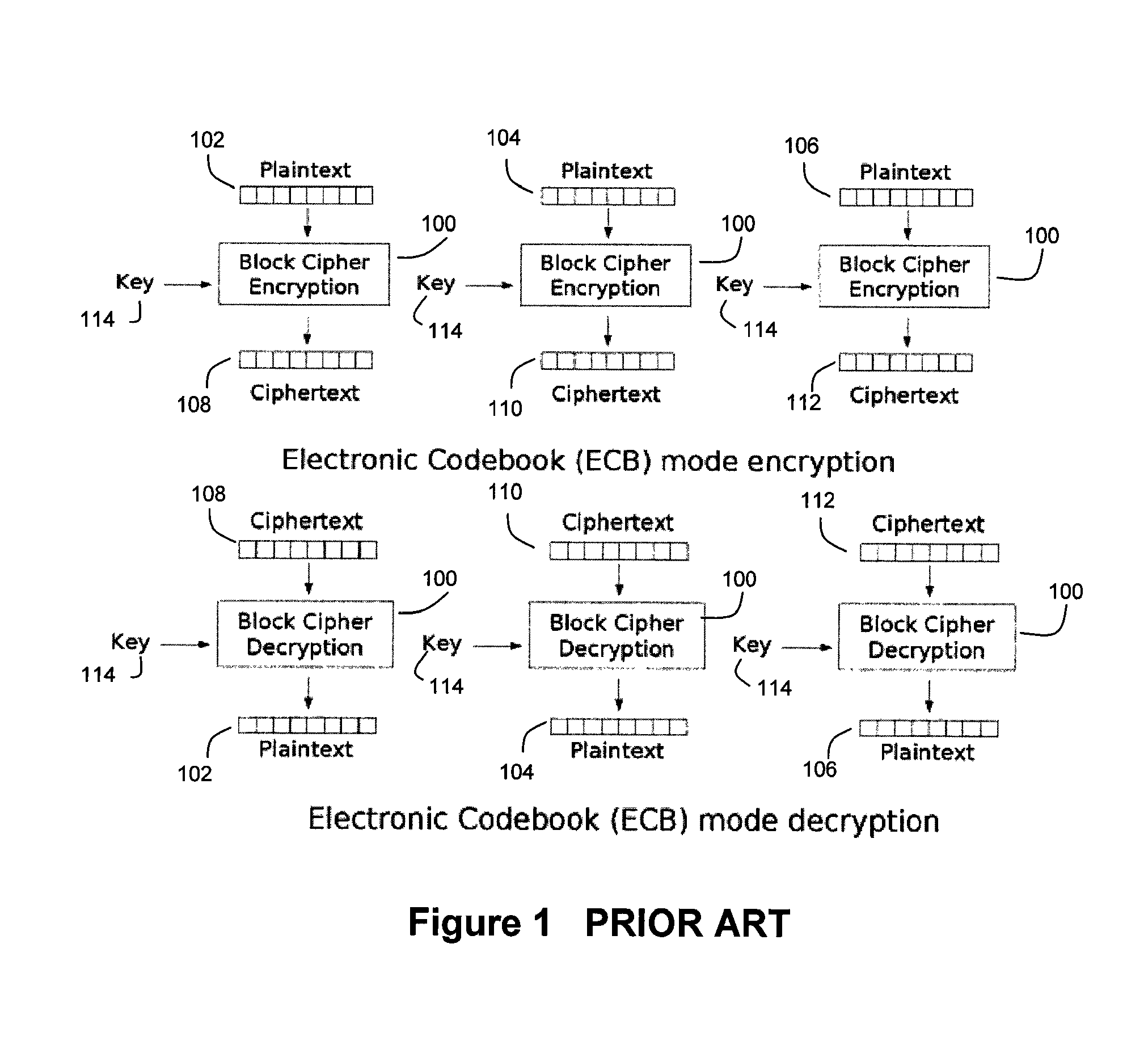Method and system for high throughput blockwise independent encryption/decryption
a blockwise independent, high-throughput technology, applied in the field of improved techniques for encrypting and decrypting data, can solve the problems of compromising the security of the ciphertext, affecting the security of the ecb encryption, and being vulnerable to penetration
- Summary
- Abstract
- Description
- Claims
- Application Information
AI Technical Summary
Benefits of technology
Problems solved by technology
Method used
Image
Examples
Embodiment Construction
[0052]FIG. 4 illustrates an exemplary data segment 400 on which the encryption / decryption technique of the present invention can be performed. The data segment 400 comprises a plurality of data blocks 102, 104, 106, . . . . Each data block comprises a plurality of data bits and preferably has a fixed length (e.g., 64 bits, 256 bits, etc.). In an exemplary embodiment, wherein AES block ciphers are used, which as explained above operate on 16-byte data blocks, it is preferred that the data blocks 102, 104, 106 . . . possess a length of 16 bytes. It should also be noted that the size of the data segment 400 is typically much larger than the size of an individual data block. For example, a data storage system may operate on “logical blocks” of data having a size of 512 bytes. In such a case, the “logical block”, which can serve as the data segment 400, will be a collection of 32 16-byte data blocks.
[0053]FIG. 5(a) illustrates an embodiment of the present invention wherein the encryption...
PUM
 Login to View More
Login to View More Abstract
Description
Claims
Application Information
 Login to View More
Login to View More - R&D
- Intellectual Property
- Life Sciences
- Materials
- Tech Scout
- Unparalleled Data Quality
- Higher Quality Content
- 60% Fewer Hallucinations
Browse by: Latest US Patents, China's latest patents, Technical Efficacy Thesaurus, Application Domain, Technology Topic, Popular Technical Reports.
© 2025 PatSnap. All rights reserved.Legal|Privacy policy|Modern Slavery Act Transparency Statement|Sitemap|About US| Contact US: help@patsnap.com



